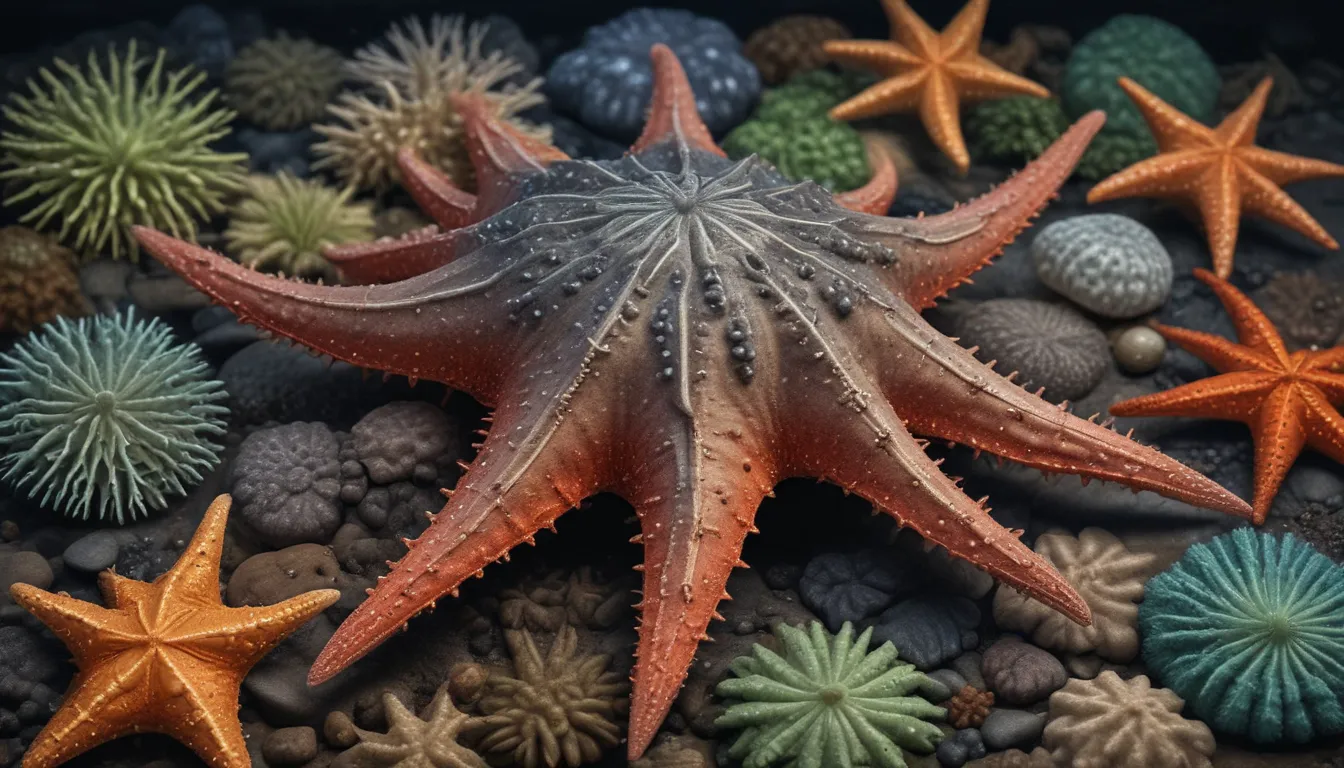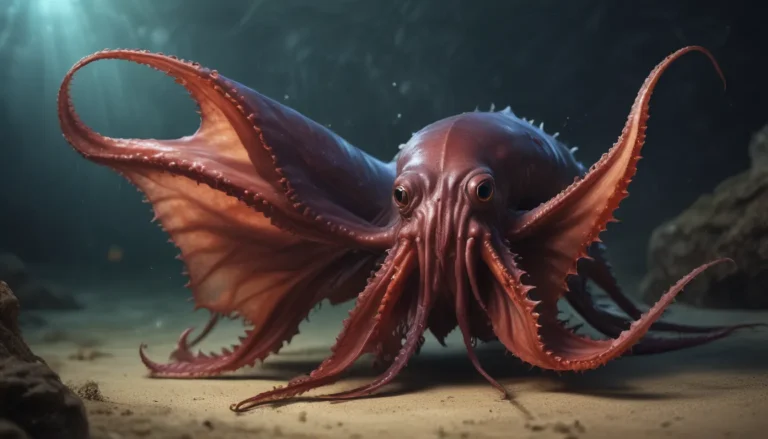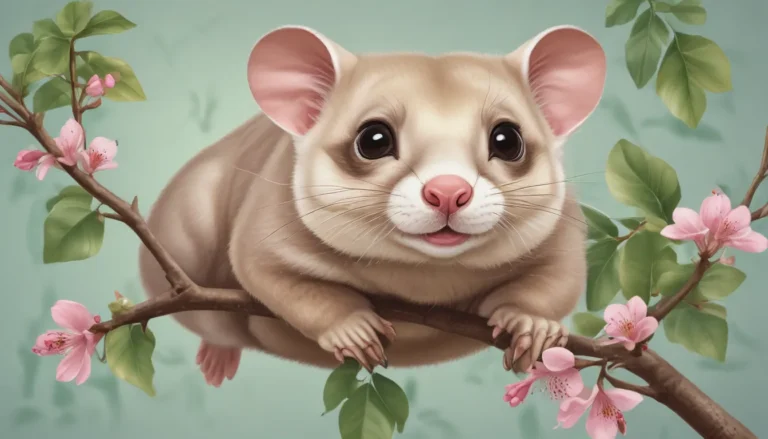The pictures we use in our articles might not show exactly what the words say. We choose these pictures to make you interested in reading more. The pictures work together with the words but don’t take their place. The words still tell you the important facts.
Echinoderms, the enchanting marine creatures of the ocean, are a captivating group with over 7,000 known species. From the iconic starfish to the mysterious sea cucumbers, these unique animals possess remarkable abilities that set them apart. Join us as we delve into the world of echinoderms and uncover 11 fun facts that will leave you amazed and inspired.
Unveiling the World of Echinoderms
Echinoderms are exclusively marine animals, residing in the vast oceans of the world. From the familiar starfish to the curious sea daisies, these creatures exhibit a remarkable diversity in shapes and sizes, showcasing the wonders of marine life.
The Fascinating Diversity of Echinoderms
With over 7,000 known species, echinoderms come in a wide array of forms, each with its unique characteristics. From the striking colors of sea stars to the intricate patterns of sea urchins, these marine animals never cease to amaze us with their beauty and complexity.
The Remarkable Water Vascular System
Echinoderms possess a unique water vascular system that enables them to perform essential functions such as movement, prey capture, and gas exchange. Through a network of water-filled canals, these creatures demonstrate remarkable adaptability in their marine environment.
The Astonishing World of Regeneration
One of the most fascinating abilities of echinoderms is their capacity for regeneration. Starfish, for example, have the incredible ability to regenerate lost limbs, showcasing the remarkable resilience and adaptability of these marine animals.
- Starfish: If a starfish loses one of its arms, it can regrow a new one through the process of regeneration, highlighting their incredible ability to recover from injury.
Defense Mechanisms in Echinoderms
Sea cucumbers, in particular, have a unique defense mechanism where they can expel their internal organs when threatened. This remarkable ability serves as a distraction, allowing them to escape from potential predators unscathed.
- Sea Cucumbers: When threatened, sea cucumbers can forcefully eject their digestive tract as a defense mechanism, showcasing their extraordinary adaptation to survive in the marine environment.
The Mystery of Sand Dollars
Despite their appearance, sand dollars are not actually coins but living organisms related to sea urchins. These fascinating creatures with their round, flat shape play a significant role in marine ecosystems, contributing to the balance of underwater life.
Unveiling the Tube Feet of Echinoderms
Some echinoderms, like sea stars, possess hundreds of tiny tube feet that enable them to grip surfaces and move with remarkable agility. These specialized structures play a crucial role in the locomotion and feeding habits of these marine animals.
The Important Role of Echinoderms in Marine Ecosystems
Echinoderms play a critical role in maintaining the balance of marine ecosystems by feeding on algae and other organic matter. Through their dietary habits, they prevent overgrowth in coral reefs and contribute to the overall health of underwater environments.
The Protective Shells of Sea Urchins
Sea urchins boast a hard shell made of calcium carbonate, known as tests, that provide protection and give them their characteristic spiky appearance. These shells serve as a defense mechanism against predators and highlight the unique adaptations of echinoderms.
The Resilience of Brittle Stars
Brittle stars have the remarkable ability to detach and regenerate their limbs, showcasing their resilience and adaptability in the face of challenges. This impressive capability allows them to survive and thrive in the dynamic marine environment.
- Brittle Stars: If a brittle star loses one of its long, slender arms, it can grow a new one over time, demonstrating their incredible ability to recover from injury and continue their life cycle.
The Vibrant Colors of Sea Cucumbers
Some species of sea cucumbers exhibit strikingly vibrant coloration, serving as a warning to potential predators. These colors indicate that the sea cucumbers are toxic or distasteful, a clever defense mechanism that enhances their survival in the ocean.
Discovering the Beauty of Echinoderms
In conclusion, echinoderms are truly fascinating creatures that continue to captivate us with their unique abilities and adaptations. From their regenerative powers to their colorful displays, these marine animals embody the wonders of the ocean and the diversity of life within it. Next time you encounter an echinoderm, take a moment to appreciate the marvels of nature that they represent.
Frequently Asked Questions
- What are echinoderms?
-
Echinoderms are a group of marine animals characterized by their radial symmetry, spiny skin, and unique water vascular system. Examples include starfish, sea urchins, sand dollars, and sea cucumbers.
-
How many species of echinoderms are there?
-
There are approximately 7,000 known species of echinoderms, each with its unique characteristics and adaptations to the marine environment.
-
How do echinoderms move?
-
Echinoderms use their water vascular system to move, with fluid-filled tubes extending throughout their bodies. By manipulating their tube feet, they can crawl or swim in the ocean.
-
Can starfish regenerate their limbs?
-
Yes, starfish have the remarkable ability to regenerate lost or damaged limbs, showcasing their incredible resilience and adaptability.
-
What is the role of echinoderms in the ecosystem?
-
Echinoderms play a vital role in maintaining the balance of marine ecosystems by controlling populations of other organisms and serving as a food source for various predators.
-
How do sea cucumbers defend themselves?
-
Sea cucumbers have a unique defense mechanism called "evisceration," where they expel their internal organs as a distraction or to entangle attackers, allowing them to escape.
-
Can echinoderms survive in freshwater?
- No, echinoderms are exclusively marine animals and rely on the saltwater conditions of the ocean to thrive and survive.
Echinoderms are a wondrous group of marine animals that continue to inspire and fascinate us with their unique adaptations and behaviors. Exploring the depths of the ocean and encountering these enchanting creatures is a true delight, showcasing the beauty and diversity of life within our seas. Trust in our commitment to delivering accurate and engaging content as we unravel the mysteries of the natural world, one fact at a time.






